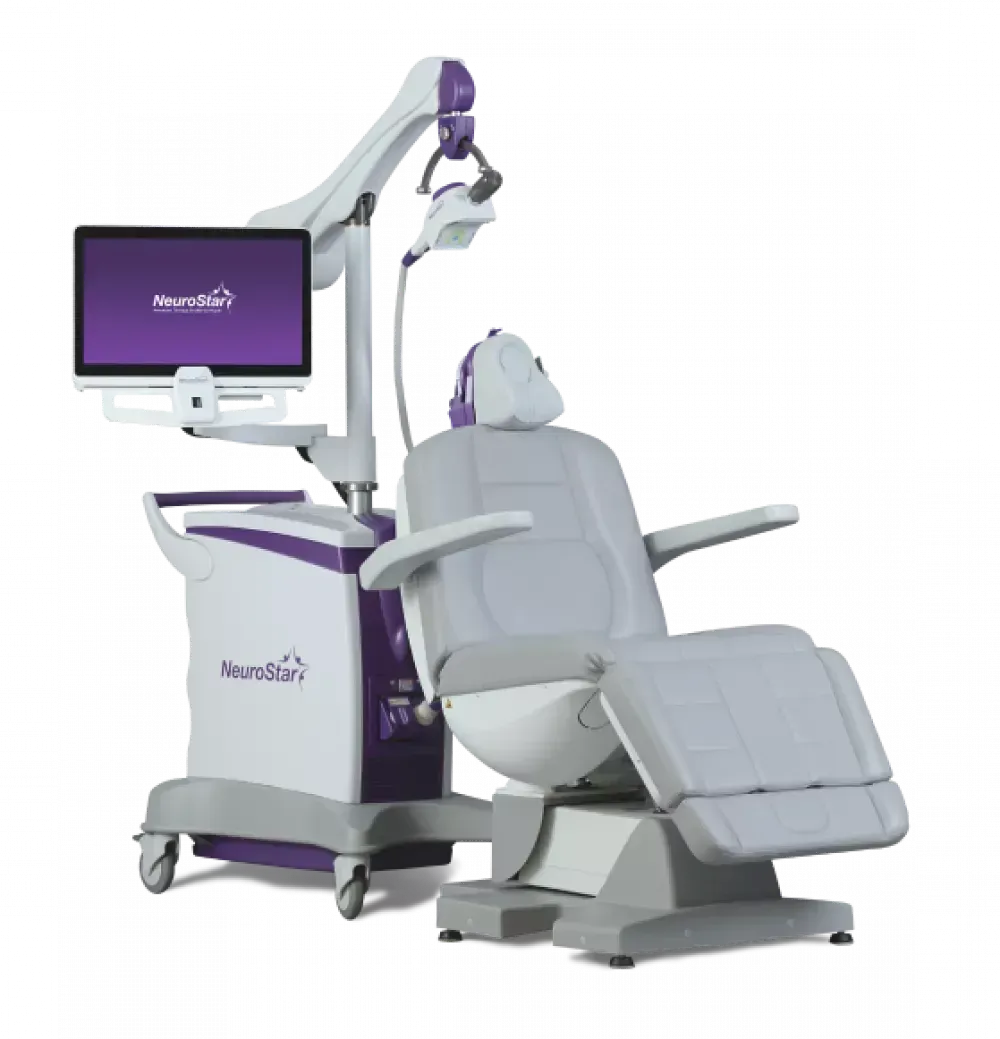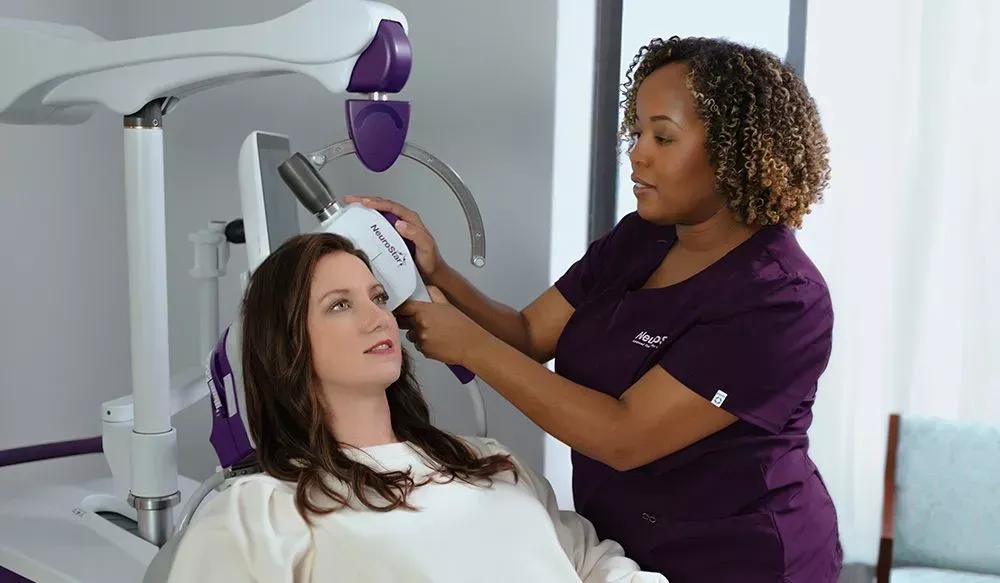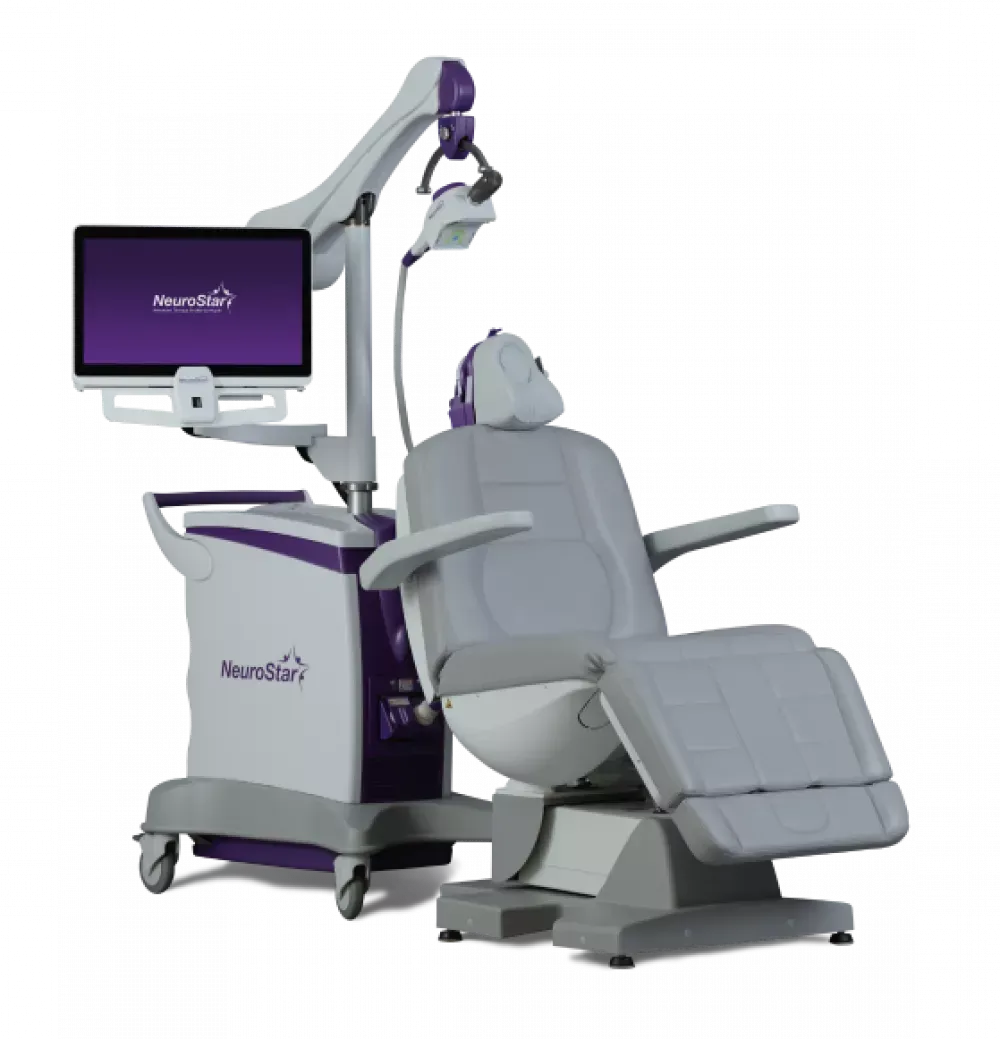
Breaking New Ground: Understanding TMS Therapy
TMS (Transcranial Magnetic Stimulation) is an FDA approved medical treatment indicated for the treatment of Major Depressive Disorder in adult patients. It is a safe and effective non-invasive, non-medication option for patients who have not benefited from their current anti-depressant medication.
Moreover, TMS therapy is free of systemic side effects that are commonly experienced with anti-depressant medications. TMS therapy targets an area of the brain that is known to be under active in patients suffering from depression called the prefrontal cortex. Highly focused magnetic pulses stimulate this area of the brain, causing activation of neurons which then release neurotransmitters to relieve depressive symptoms.

Slide title
Write your caption hereButton
Slide title
Write your caption hereButton

A Comfortable Experience: What to Expect with TMS Therapy
TMS offers a comfortable experience. You'll sit comfortably during sessions with minimal disruption to your daily routine. We personalize your TMS treatment plan based on your needs and progress. It can be combined with talk therapy for a holistic approach.
TMS has a well-established safety profile with minimal side effects. It's non-addictive and offers advantages over medications. TMS has the potential to treat other conditions like anxiety. Research is ongoing to explore its exciting possibilities. TMS offers lasting relief from depression without medication. Schedule a free consultation to discuss if TMS is right for you and embark on your path to well-being.
Treatment Process with TMS Therapy
Initial consultation
The first step in our TMS treatment process is meeting with a prospective patient to determine whether or not TMS therapy is an appropriate treatment for him or her. During this initial consultation, Dr. Sparago will meet with a prospective patient and review the patient’s symptoms, history of treatments and responses, and discuss a potential treatment plan.
First TMS therapy session
If TMS therapy has been prescribed for a patient, an initial treatment session will be scheduled for a 20-40-minute block of time. TMS treatment takes place in an outpatient setting and does not require any form of sedation during the procedure. The patient is seated in a chair similar to one found in a dentist’s office or beauty salon.
During the initial treatment session, one or more of our TMS psychiatrists will perform a motor threshold determination and localization procedure in which the appropriate energy settings and placement of the treatment coil are determined. During this part of the procedure, a magnetic pulse will be given to find the level of magnetic energy that is enough to cause movement in a patient’s fingers. Later, the magnetic coil is moved forward and positioned to be ready to direct magnetic pulses towards the left frontal lobe, specifically the Dorsal Lateral Prefrontal Cortex (DLPFC), a brain area implicated in depression.
After the magnetic coil has been correctly positioned and appropriate settings determined, TMS treatment is begun. The magnetic coil device delivers magnetic pulses that cause electrical changes within underlying brain circuitry.
During the TMS treatment session, a patient will sit reclined, awake and alert, in a chair while the TMS treatment device delivers a rapid sequence of magnetic pulses over several seconds. These sequences of magnetic pulses are repeated a few times per minute, with resting time in between active pulse sequences. The active magnetic pulses can create the feeling on a tapping sensation on the scalp. Because the TMS treatment device emits a loud clicking sound while the magnetic pulses are discharged, ear plugs are offered to our patients. Some patients will elect to listen to music using noise-canceling or noise-blocking headphones.
Overall, the procedure is well-tolerated. During the treatment sessions, patients can listen to music, watch television, or simply relax.
Subsequent treatment sessions
Each patient’s individual treatment parameters (e.g., the motor threshold) will impact the duration of each subsequent treatment session. For most individuals, these sessions typically take 25-45 minutes to perform. A typical course of TMS therapy involves treatment five days a week for four to six weeks, but this can vary based on a patient’s response to treatment. A set of tapering TMS treatments is sometimes used to ensure ongoing results. As our patients are progressing through their TMS therapy treatments, our TMS staff will regularly assess progress and adjust our treatment plan as needed.
After a TMS therapy session
Our patients typically resume their normal activities and go about their day immediately after each session, without any special restrictions or limitations.
© 2024 MindBrain Wellness Center. All rights reserved. Sitemap. Built by GENEROUS APP
